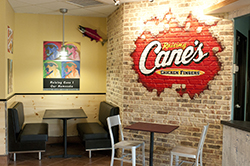Beginning fall 2015, the criteria for students to be named to the Dean’s List will be changed. Rather than the criteria being based on a specific GPA, students’ eligibility for the award will be based on a departmental GPA percentage.
“In each semester, undergraduate students who receive grades that place them in the top 20 percent of their academic major, based on completing all courses, with no incomplete grades, at least 12 credits taken, and at least a 3.3 GPA shall be recognized as Dean’s List recipients,” explained former Provost Thomas Pearson in an email sent out to students on July 28.
Undeclared students will also be eligible to be named to the Dean’s List as they will be grouped together as if in the same major. Those in double majors can qualify as well for the Dean’s List through either of their majors.
A student who “straddles” the 20 percent mark is not eligible to make the Dean’s List. Further explained, if there are 20 students in a major, the top four questioned if professors across the University were grading higher than others,” said Dr. Christopher Derosa, professor from the history and anthropology department who chaired the Task Force on grade inflation from 2010-2011. “It was the suggestion of the Provost office to look into the recent grade inflation,” explained Derosa.
“Although we were concerned, grade inflation is normal in other universities as well,” added Dr. Datta Naik, Vice Provost and Dean of the Graduate School. Various tactics were considered to approach the issue of grade inflation. “We started with a series of other measures to allow restraint for giving out grades. Some departments raised the standards of A, B, and C grades to make it more challenging to achieve them,” explained Derosa.
When this did not completely solve the problem because grading practices were not keeping pace, the faculty council considered different tactics to raise the bar on grading to make the Dean’s List award more worthy. “It takes time for faculty to change how they grade, so considerations for changing the criteria of the Dean’s List became a focus instead,” stated Naik.
Appointed by former Provost Thomas Pearson in 2011, a faculty council, made up of nine members, including professors and academic administrators, began to assess this grade issue. After examining a 2013 grading report, the faculty council found that over ten-year period, grades had increased steadily in various departments. The steady rise in grades over the past several years allowed for a high percentage of students to achieve the Dean’s List status.
The report stated that based on the Dean’s List current criteria of requiring a student to earn at least 3.5 GPA in 12 or more credits completed in a semester; the numbers have risen from 21.7 percent in 2001 to 32.4 percent in 2013.
“We tried to carefully approach [changing the criteria of] the Dean’s List in various ways,” said Derosa. Raising the bar on the Dean’s List was not something that occurred over night. “Changing the criteria of this academic recognition was a process of working through numerous recommendations,” explained Derosa.
Derosa and the faculty council worked with Student Government Association (SGA) to carefully conduct new requirements for the Dean’s List that will help address the concern of grade inflation and make the Dean’s List more worthy without hurting students.
Christian Caruso, a junior business student explains his thoughts on the changes of the Dean’s List, “This new criteria honestly seems pretty intimidating, however, I am new to the school so I would love to earn the honor of the Dean’s List and have it on my resume.”
“Hopefully these new changes will motivate students as this recognition is an honor,” explained Naik. “The Dean’s List will mean something more special now, as there may not be as many recipients, those who deserve it will earn the recognition,” he said.


